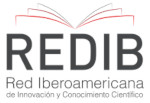Computing Technologies for Self-Directed Teaching and Learning: Opportunities, Problems, and Coping Mechanisms
DOI:
https://doi.org/10.48017/dj.v10i3.3388Palabras clave:
Computer Technologies, Teaching, Learning, Opportunities and Problems, Coping strategiesResumen
La demanda en el uso de tecnologías informáticas en la educación se amplificó cuando la pandemia azotó al mundo. A pesar de las oportunidades derivadas del uso de estas tecnologías, los problemas encontrados pueden obstaculizar la efectividad de la instrucción y el aprendizaje autodirigido. Con esto, existe la necesidad de examinar las oportunidades, los problemas y las estrategias de afrontamiento experimentadas por profesores y estudiantes. Los encuestados incluyen 69 miembros del profesorado y 414 estudiantes universitarios matriculados en varios programas de grado en una Universidad Estatal de Filipinas. El estudio utilizó una encuesta descriptiva y un diseño de investigación correlacional. El estudio revela que tanto profesores como estudiantes utilizan ampliamente las tecnologías informáticas (hardware/software) que los beneficiaron. Consecuentemente, tanto profesores como estudiantes reconocieron que las tecnologías informáticas plantean problemas. No existe una correlación significativa entre las oportunidades y los problemas para los estudiantes; sin embargo, se observaron correlaciones significativas a altamente significativas para los profesores. El profesorado y los estudiantes utilizan diversas estrategias de afrontamiento para abordar los problemas encontrados y son altamente efectivas. Asociado a esto, existe un alto grado de influencia de los factores en las estrategias de afrontamiento de los encuestados. El apoyo de expertos, la disponibilidad y accesibilidad de los recursos tecnológicos, así como la exposición a actividades de desarrollo del aprendizaje, son un apoyo muy esencial para que los profesores y los estudiantes enfrenten de manera eficaz los desafíos que enfrentan.
Métricas
Citas
Adarlo, G., and Jackson, L. (2017). For whom is K-12 education: A critical look into twenty-first century educational policy and curriculum in the Philippines. In Educating for the 21st Century (pp. 207-223). Singapore: Springer.
Aminullah, A., Loeneto, B. A., & Vianty, M. (2019). Teachers’ Attitudes and Problems of Using ICT in teaching EFL. English Review: Journal of English Education, 8(1), 147-156.
Barroso, K. (2018). Uses of computers in schools. https://classroom.synonym. com /uses-computers-schools-5022319.html.
Cakici, D. (2016). The use of ICT in teaching English as a foreign language. Participatory educational research, 4(2), 73-77.
Caruso, J. & Kvavik, R. (2005). ECAR Study of Students and Information Technology, 2005: Convenience, Connection, Control, and Learning. https://library.educause.edu/-/media/files/library/2005/10/ers0506w-pdf.pdf
Dahal, B., & Dahal, N. (2015). Opportunities and challenges to use ICT in Nepalese Mathematics classroom. In Proceedings of second national conference on mathematics education (pp. 50-52). Nepal: Council for Mathematics Education.
Dockrell, S., Earle, D., & Galvin, R. (2010). Computer-related posture and discomfort in primary school children: The effects of a school-based ergonomic intervention. Computers & Education, 55(1), 276-284.
Habibu, T. (2012). A Study of Difficulties Faced by Teachers in Using ICT in Classroom Teaching-Learning in Technical and Higher Educational Institutions in Uganda (Doctoral dissertation, Department of Technical and Vocational Education (TVE), Islamic University of Technology (IUT)).
Harutyunyan, P., Moldoveanu, A., Moldoveanu, F., & Asavei, V. (2015). Health-Related Impact, Advantages and Disadvantages of ICT Use in Education, Compared to their Absence in the Past. eLearning & Software for Education, (1).
Jhurree, V. (2005). Technology integration in education in developing countries: Guidelines to policy makers. International Education Journal, 6(4), 467-483.
Junaidi, J., Budianto Hamuddin, B., Wendy, S., Fathu, R., & Tatum, D. (2020). ICT usage in teaching English in Pekanbaru: Exploring junior high school teachers’ problems. International Journal of Advanced Science and Technology, 29(03), 5052-5063.
Klapproth, F., Federkeil, L., Heinschke, F., & Jungmann, T. (2020). Teachers' Experiences of Stress and Their Coping Strategies during COVID-19 Induced Distance Teaching. Journal of Pedagogical Research, 4(4), 444-452.
McGee, K. (2018). Importance of Computer Technology in Education. https://classroom.synonym.com/importance-computer-technology-education-6628139.html.
Millea, J., Green, I., & Putland, G. (2005). Emerging technologies: a framework for thinking. https://www.academia.edu/2272761/Emerging_technologies_a_framework_for_thinking
Nurliani, R., Sinaga, P., & Rusdiana, D. (2021). Problems of online learning and the use of information and communication technology (ICT) in physics learning at Sumedang, West Java. In Journal of Physics: Conference Series (Vol. 1806, No. 1, p. 012043). IOP Publishing.
Oblinger, D. and Oblinger, J. (2005). Educating the net generation. https://www.educause.edu/ir/library/PDF/pub7101.PDF
Roth, K. (2020). Technology in education: The ongoing debate of access, adequacy and equity. Schmid, E. C. (2008). Potential pedagogical benefits and drawbacks of multimedia use in the English language classroom equipped with interactive whiteboard technology. Computers & Education, 51(4), 1553-1568.
Siddiquah, A., & Salim, Z. (2017). The ICT facilities, skills, usage, and the problems faced by the students of higher education. EURASIA Journal of Mathematics, Science and Technology Education, 13(8), 4987-4994.
Tomaro, Q. P. V. (2018). ICT integration in the educational system of Philippines. Journal of Governance and Public Policy, 5(3), 259-282.
Trinder, J. (2005) Mobile Technologies and Systems, in: Kukulska-Hulme, A. and Traxler, J. Mobile Learning: A Handbook for Educators and Trainers. Oxon: Routledge
Trnka, R., Martínková, Z., & Tavel, P. (2016). An integrative review of coping related to problematic computer use in adolescence. International Journal of Public Health, 61(3), 317-327.
Vrasidas, C., Pattis, I., Panaou, P., Antonaki, M., Aravi, C., Avraamidou, L., ... & Zembylas, M. (2010). Teacher use of ICT: Challenges and opportunities. In Proceedings of the 7th International Conference on Networked Learning. Available at http://www. lancaster. ac. uk/fss/organisations/netlc/past/nlc2010/abstrac ts/PDFs/Vrasidas. pdf.
Descargas
Publicado
Cómo citar
Número
Sección
Licencia
Derechos de autor 2025 Elizabeth Lascano, Divina Yango

Esta obra está bajo una licencia internacional Creative Commons Atribución 4.0.
O periodico Diversitas Journal expressa que os artigos são de unica responsabilidade dos Autores, conhecedores da legislação Brasileira e internacional. Os artigos são revisados pelos pares e devem ter o cuidado de avisar da possível incidencia de plagiarismo. Contudo o plagio é uma ação incontestavel dos autores. A Diversitas Journal não publicará artigos com indicios de Plagiarismos. Artigos com plagios serão tratados em conformidade com os procedimentos de plagiarismo COPE.
A violação dos direitos autorais constitui crime, previsto no artigo 184, do Código Penal Brasileiro:
“Art. 184 Violar direitos de autor e os que lhe são conexos: Pena – detenção, de 3 (três) meses a 1 (um) ano, ou multa. § 1o Se a violação consistir em reprodução total ou parcial, com intuito de lucro direto ou indireto, por qualquer meio ou processo, de obra intelectual, interpretação, execução ou fonograma, sem autorização expressa do autor, do artista intérprete ou executante, do produtor, conforme o caso, ou de quem os represente: Pena – reclusão, de 2 (dois) a 4 (quatro) anos, e multa.”


















